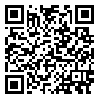Fri, Nov 28, 2025
[Archive]
Volume 8, Issue 3 (August 2021)
IJML 2021, 8(3): 215-222 |
Back to browse issues page
Download citation:
BibTeX | RIS | EndNote | Medlars | ProCite | Reference Manager | RefWorks
Send citation to:



BibTeX | RIS | EndNote | Medlars | ProCite | Reference Manager | RefWorks
Send citation to:
Ahmadi S, Eslami G, Vakili M, Barzegar K, Fattahi bafghi A. Cutaneous Leishmaniasis in Suspected Patients Referred to the Healthy Centrals of Abarkouh, Ardakan, Bafgh and Khatam, Yazd Province, Iran. IJML 2021; 8 (3) :215-222
URL: http://ijml.ssu.ac.ir/article-1-396-en.html
URL: http://ijml.ssu.ac.ir/article-1-396-en.html
Department of Medical Parasitology and Mycology, School of Medicine, Shahid Sadoughi University of Medical Sciences, Yazd, Iran, Infectious Diseases Research Center, Shahid Sadoughi Hospital, Shahid Sadoughi University of Medical Sciences, Yazd, Iran
Abstract: (1289 Views)
Background and Aims: Cutaneous Leishmaniasis is a significant health problem in many parts of Iran. Management of the disease and its treatment is a global dilemma. In this study, the status and the proportions of Cutaneous Leishmaniasis induced by Leishmania major and tropica among suspected patients referred to the Health Centers of Abarkouh, Ardakan, Bafgh, and Khatam cities, Yazd Province, Iran were investigated.
Materials and Methods: The lesion was diagnosed using direct smear microscopy and conventional polymerase chain reaction.
Results: A total of 90 samples were prepared of which 64 (71.1%) were male and 26 (27.9%) were female. Also, 30 (33.3%) samples came from Ardakan, 29 (32.2%) samples from Bafgh, 21 (23.3%) samples from Abarkouh, and 10 (11.1%) samples from Khatam city. Ninety samples with 112 lesions were recruited and parasitologically examined. The results showed that, in macroscopic examination, 90 of the patients had 59 lesions: patients with lesion(s) induced by Leishmania major = 52 (M=35, 67.3%, F=17, 32.7%), lesion(s) induced by Leishmania tropica =4 (M=2, 50.0%, F=2, 50.0%), and lesion(s) induced by false positive =33 (36.4%). Basides, in microscopic method, 90 of the patients had 59 lesions: patients with lesion(s) induced by Leishmania major =44 (M=29, 65.9%, F=15, 34.09%), lesion(s) induced by Leishmania tropica =9 (M=8, 88.8%, F=1, 11.2%), and lesion(s) induced by false positive =37 (M=28, 75.7%, F=9, 24.3%).
Conclusion: Although travel history to an endemic area is important for diagnosis, parasitological confirmation is necessary to initiate treatment.
Materials and Methods: The lesion was diagnosed using direct smear microscopy and conventional polymerase chain reaction.
Results: A total of 90 samples were prepared of which 64 (71.1%) were male and 26 (27.9%) were female. Also, 30 (33.3%) samples came from Ardakan, 29 (32.2%) samples from Bafgh, 21 (23.3%) samples from Abarkouh, and 10 (11.1%) samples from Khatam city. Ninety samples with 112 lesions were recruited and parasitologically examined. The results showed that, in macroscopic examination, 90 of the patients had 59 lesions: patients with lesion(s) induced by Leishmania major = 52 (M=35, 67.3%, F=17, 32.7%), lesion(s) induced by Leishmania tropica =4 (M=2, 50.0%, F=2, 50.0%), and lesion(s) induced by false positive =33 (36.4%). Basides, in microscopic method, 90 of the patients had 59 lesions: patients with lesion(s) induced by Leishmania major =44 (M=29, 65.9%, F=15, 34.09%), lesion(s) induced by Leishmania tropica =9 (M=8, 88.8%, F=1, 11.2%), and lesion(s) induced by false positive =37 (M=28, 75.7%, F=9, 24.3%).
Conclusion: Although travel history to an endemic area is important for diagnosis, parasitological confirmation is necessary to initiate treatment.
Type of Study: Research |
Subject:
Parasitology
Received: 2021/01/1 | Accepted: 2021/08/28 | Published: 2021/09/25
Received: 2021/01/1 | Accepted: 2021/08/28 | Published: 2021/09/25
Send email to the article author
| Rights and permissions | |
 |
This work is licensed under a Creative Commons Attribution-NonCommercial 4.0 International License. |







